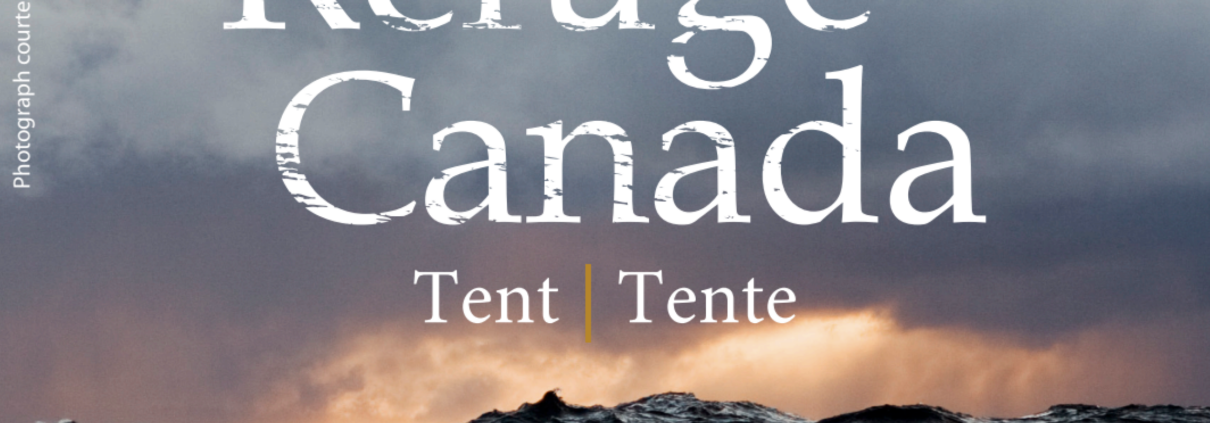Refuge Tent Canada Exhibit, April 25-June 1
Visit the Refuge Canada Tent at the Margaret Hennigar Public Library April 25-June 1.
Refuge Canada Tent is a travelling exhibit created by the Canadian
Museum of Immigration at Pier 21 and is supported by TD Bank Group.
Refuge Canada Tent is a small, bilingual exhibit created by the Canadian Museum of Immigration at Pier 21. The exhibit was designed to resemble a tent and is the same size as a typical shelter used in refugee camps today. Refuge Canada Tent introduces people to Canada’s place in the global refugee crises. The exhibit helps people understand the experience of refugees and the challenges they face and investigates Canada’s historical track-record of responding to refugees.
The refugee experience is important to explore as a part of Canada’s immigration history, and to show that Canada has had a mixed record in welcoming refugees. Refuge Canada Tent looks at injustices and challenges as well as the stories of success and contributions made by people who came to Canada as refugees.
“What is the Refuge Canada Tent?”
Refuge Canada Tent introduces people to Canada’s place in the global refugee crises. It does this in two ways: First, by helping people understand the experience of refugees and the challenges they face. Second, by investigating Canada’s historical track-record of responding to refugees, which is more mixed than people may realize.
This exhibit was adapted from the larger exhibition, Refuge Canada, which is currently travelling to museums across Canada. You can find information on the Canadian Museum of Immigration at Pier 21’s website about their travelling exhibitions program.
“Why is it important?”
The refugee experience is important to explore as a part of Canada’s immigration history, and to show that Canada has had a mixed record in welcoming refugees. Refuge Canada Tent looks at injustices and challenges as well as the stories of success and contributions made by people who came to Canada as refugees.
“Where did the information in the exhibit come from?”
The Museum research team did a series of in-depth, scholarly research reports on the history of refugees and presented them to the curatorial team. The curatorial team used the reports to choose how the information would be presented in the exhibit.
“Is it family friendly?”
The exhibit was created for a general audience, and does contain sensitive content in stories or images that may evoke emotions. It will also prompt questions and lead to important discussions and education. Information is presented in an interactive way that will engage young people, however this kind of emotional experience might not be for everyone, so the decision to bring children through the exhibit is up to the individual parents or guardians who know their children best.
“What is a refugee? How is that different from an immigrant?”
The main difference is that a refugee is forced to flee from persecution, whereas an immigrant chooses to live in another country. Refuge Canada Tent will call into question some of the preconceptions about what it means to be a refugee, and investigate the various reasons a person might face persecution.
Refugee Terms
The following are important refugee terms as outlined by the Canadian Council for Refugees:
Refugee: a person who is forced to flee from persecution and who is located outside of their home country.
Convention refugee: a person who meets the refugee definition in the United Nation’s 1951 “Convention Relating to the Status of Refugees”. This definition is used in Canadian law and is widely accepted internationally. To meet the definition, a person must be outside their country of origin and have a well-founded fear of being persecuted for reasons of race, religion, nationality, membership of a particular social group or political opinion.
Refugee claimant or Asylum Seeker: a person who has fled their country and is asking for protection in another country. We don’t know whether a claimant is a refugee or not until their case has been decided.
Resettled refugee: a person who has fled their country, is temporarily in a second country and then is offered a permanent home in a third country. Refugees resettled to Canada are selected abroad and become permanent residents as soon as they arrive in Canada.
Protected person: according to Canada’s Immigration and Refugee Protection Act, a person who has been determined to be either (a) a Convention Refugee or (b) a person in need of protection (including, for example, a person who is in danger of being tortured if deported from Canada).
Internally displaced person (IDP): a person who is forced to leave their home, but who is still within the borders of their home country.
Stateless person: a person that no state recognizes as a citizen. Some refugees may be stateless but not all are. Similarly, not all stateless people are refugees.
(Source: http://ccrweb.ca/en/glossary)



